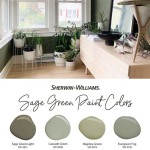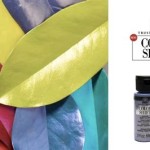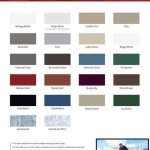How To Paint Landscape Rocks With Acrylics
Painting landscape rocks with acrylics is a rewarding and creative endeavor. The process allows for the transformation of ordinary stones into miniature works of art that can enhance gardens, serve as unique home décor, or be gifted to others. A successful rock painting project hinges on understanding the characteristics of acrylic paints, preparing the rock surface, and employing appropriate painting techniques.
This comprehensive guide outlines the steps involved in painting landscape rocks with acrylics, encompassing material selection, surface preparation, painting techniques, and sealing methods. Adherence to these guidelines will assist individuals in achieving durable and visually appealing results.
Selecting the Appropriate Materials
The success of painting landscape rocks with acrylics depends significantly on the choice of materials. Selecting appropriate paints, brushes, and sealants is crucial for achieving a lasting and aesthetically pleasing result. Inappropriate material selection can lead to paint chipping, fading, or sealant failure.
Acrylic Paints: Acrylic paints are the primary medium for this art form. They are water-based, quick-drying, and available in a wide range of colors and opacities. Artist-grade acrylics are recommended for their higher pigment concentration and lightfastness, meaning they are more resistant to fading over time due to exposure to sunlight. Student-grade acrylics are a more economical option suitable for practice or less demanding projects. A variety of colors should be selected to allow for blending and color mixing to achieve desired shades and tones. Consider purchasing individual tubes of frequently used colors and a pre-packaged set for a wider color palette. Specific types of acrylics, such as acrylic gouache, offer a matte finish, while fluid acrylics are ideal for creating washes and smooth gradients. The choice depends on the desired aesthetic and level of detail.
Paint Brushes: A diverse selection of paint brushes is essential for applying paint effectively and achieving different effects. Synthetic brushes are suitable for acrylic paints as they are durable and easy to clean. A variety of brush sizes and shapes are recommended. Fine-tipped brushes are necessary for intricate details, while larger, flat brushes are useful for covering larger areas and creating washes. Round brushes are versatile and suitable for outlining and creating curves. Angled brushes are helpful for painting edges and corners. Brush care is crucial for maintaining their lifespan. Brushes should be cleaned immediately after use with soap and water.
Sealers: A sealant is a protective coating that is applied to the painted rock to protect it from the elements and prevent the paint from chipping or fading. Acrylic-based sealers are generally recommended for use with acrylic paints. Sealants are available in various finishes, including matte, gloss, and satin. The choice of finish depends on the desired aesthetic. A matte sealant will reduce shine, providing a natural look, while a gloss sealant will enhance the colors and create a shiny surface. Satin sealants offer a balance between matte and gloss. Sealants can be applied with a brush or in a spray form. Spray sealants offer a more even coverage and are particularly useful for rocks with textured surfaces. It is important to apply several thin coats of sealant, allowing each coat to dry completely before applying the next. Proper ventilation is necessary when using spray sealants.
Other Materials: In addition to paints, brushes, and sealants, other materials may be required for painting landscape rocks. These include:
*Pencils: For sketching designs onto the rock surface.
*Erasers: For correcting pencil sketches.
*Palette: A surface for mixing paints. Palette paper, ceramic plates, or plastic palettes can be used.
*Water Container: For cleaning brushes.
*Paper Towels or Rags: For wiping brushes and cleaning up spills.
*Sandpaper (Optional): For smoothing rough rock surfaces.
*Primer (Optional): For creating a smooth, uniform base for painting.
*Varnish (Optional): Provides additional UV protection to colors.
Preparing the Rock Surface
Proper preparation of the rock surface is a critical step in ensuring the longevity and quality of the painted design. A clean, smooth, and properly primed surface will allow the acrylic paints to adhere effectively and prevent future chipping or peeling.
Cleaning the Rock: The initial step involves thoroughly cleaning the rock to remove any dirt, debris, or loose particles. This can be achieved by scrubbing the rock with a stiff brush and soapy water. Ensure all traces of soap are rinsed off and the rock is allowed to dry completely before proceeding. For rocks with particularly stubborn dirt or algae, a mild bleach solution can be used, followed by a thorough rinsing. Allowing the rock to air-dry completely is crucial to prevent moisture from interfering with the paint adhesion.
Smoothing the Surface (Optional): Depending on the texture of the rock, it may be beneficial to smooth the surface to facilitate easier painting and achieve a more refined finish. This can be achieved using sandpaper with varying grits. Start with a coarser grit to remove any large bumps or imperfections, and then gradually move to finer grits to create a smoother surface. Exercise caution during sanding to avoid creating excessive dust. Wear a dust mask to protect from inhaling fine particles. If the rock has a porous surface, consider applying a sealant after sanding to prevent the paint from being absorbed unevenly.
Priming the Rock (Optional): Applying a primer to the rock surface can improve the adhesion of the acrylic paints and create a more uniform base for painting. Acrylic gesso is a popular choice for priming rocks. It is a white, water-based primer that provides a slightly textured surface for the paint to grip onto. Apply a thin, even coat of gesso to the entire rock surface using a brush or sponge. Allow the gesso to dry completely before proceeding with painting. Priming is particularly important for rocks with dark or uneven coloration, as it will help the colors of the acrylic paints to appear more vibrant and true to their intended shade.
Sealing before Painting (Optional): Some artists opt to seal the rock with a clear sealant before painting. This can help prevent the paint from soaking into the rock, particularly if the rock is porous. It also allows for easier correction of mistakes, as the paint sits on the surface and can be wiped away more easily. Ensure the sealant is fully dried before commencing the painting process.
Applying Painting Techniques
The application of effective painting techniques is essential for translating a vision into a tangible work of art on the rock surface. Mastery of basic techniques, such as blending, layering, and detailing, can significantly enhance the overall quality and visual appeal of the painted rock.
Sketching the Design: Before applying paint, it is helpful to sketch the desired design onto the rock surface using a pencil. This provides a guideline for the placement of colors and details. Keep the sketches light and easily erasable. Simple shapes and outlines can be used as a foundation for more complex designs. For intricate designs, consider using transfer paper to transfer the design onto the rock surface. Ensure the transfer paper is securely attached to the rock to prevent smudging.
Base Coating: Applying a base coat of paint is often the first step in the painting process. A base coat provides a foundation for subsequent layers of paint and can help to unify the overall design. Choose a color that complements the overall color scheme of the design. Apply the base coat evenly using a brush or sponge. Allow the base coat to dry completely before proceeding with subsequent layers. Multiple thin layers of base coat may be needed to achieve full coverage, especially if the rock surface is dark or uneven.
Layering: Layering involves applying multiple layers of paint to create depth, dimension, and subtle color variations. This technique is particularly useful for creating realistic landscape scenes. Start with lighter colors and gradually build up to darker colors. Allow each layer of paint to dry completely before applying the next. Thin layers of paint are generally preferable to thick layers, as they dry more evenly and are less prone to cracking. Blending colors within each layer can also enhance the depth and dimension of the painting.
Blending: Blending is a technique used to create smooth transitions between colors. This can be achieved by using a soft brush to lightly blend the edges of adjoining colors while the paint is still wet. Alternatively, a dry brush can be used to lightly stipple the colors together. Blending is particularly useful for creating gradients and soft transitions in landscape scenes, such as sunsets or clouds. Practice blending techniques on a separate surface before applying them to the rock to achieve the desired effect.
Detailing: Detailing involves adding small, intricate details to the painting to enhance its realism and visual interest. This can be achieved using fine-tipped brushes, paint pens, or toothpicks. Details can include highlights, shadows, textures, and patterns. Work slowly and carefully when adding details, and use a light touch to avoid overwhelming the overall design. Detailing is particularly important for creating realistic features in landscape scenes, such as leaves, rocks, and water.
Dry Brushing: Dry brushing is a technique used to create textured effects. This involves using a dry brush with a small amount of paint to lightly brush over the rock surface. The dry brush will pick up the texture of the rock and create a broken, textured appearance. This technique is particularly useful for creating realistic textures in landscape scenes, such as rocks, grass, and trees.
Sponging: Sponging is a technique used to create textured effects by dabbing paint onto the surface with a sponge. This technique is effective for creating foliage, clouds, or rock textures. Various types of sponges can be used to create different textures. Experimentation with different sponges and paint consistencies allows for a variety of effects.
Color Mixing: Understanding color mixing is crucial for achieving the desired color palette in landscape rock painting. Primary colors (red, blue, and yellow) can be mixed to create secondary colors (orange, green, and purple). By further mixing primary and secondary colors, a wide range of tertiary colors can be achieved. Adding white to a color will create a tint, while adding black will create a shade. Experiment with color mixing to achieve the desired hues and tones for the landscape scene. Keep a color mixing chart handy as a reference.
Correcting Mistakes: Mistakes are inevitable in the painting process. Acrylic paints can be easily corrected while they are still wet. Simply wipe away the mistake with a damp cloth or brush. If the paint has already dried, it can be removed with sandpaper or by applying a small amount of rubbing alcohol. Gentle scrubbing may be required. Exercise caution when correcting mistakes to avoid damaging the surrounding paint.

How To Paint Rocks In Water Using Acrylic Paints

How To Paint Rocks Stones In Acrylic Painting Tutorial

River Rocks Landscape Acrylic Painting Tutorial

How To Paint Rocks And Cliffs Draw Academy

How To Paint Rocks And Cliffs Draw Academy

How To Paint Water Stream Easy Way Rocks Acrylic Painting

How To Paint Rocks And Cliffs Draw Academy

Easy How To Paint Cliff Rocks Step By Tutorial For Beginners

How To Paint Water And Rocks Step By Easy Acrylic Painting Tutorial

How To Paint Rocks And Cliffs Draw Academy
Related Posts








